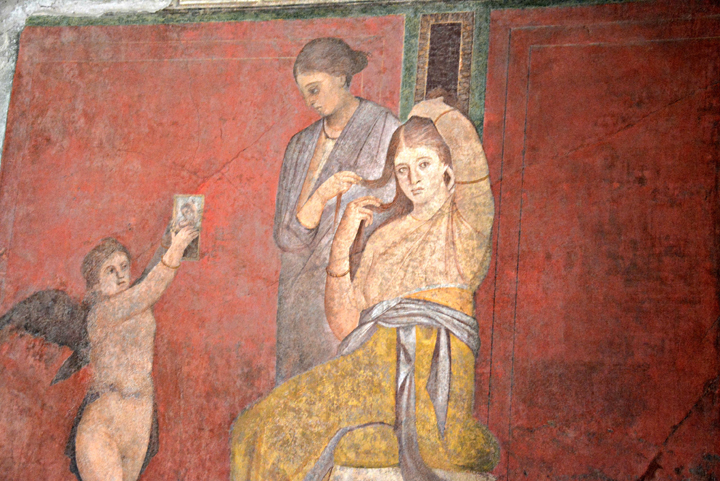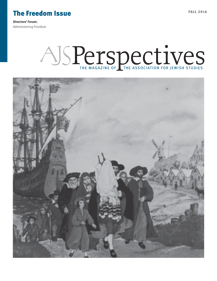
Teaching is both beholden to topical genre and situational context. In my case, the genre is the Babylonian Talmud and the context is that of a transdenominational rabbinical school, specifically, Hebrew College in Brookline, MA. My students come from a variety of backgrounds and will serve a wide range of Jewish communities. I could decide that what is important for my students is only to be able to read the Bavli (i.e., the Babylonian Talmud) through their own lenses, that is, to ask, "How is it relevant for me and my future rabbinate?" Yet that would shortchange the richness of the Talmud and ultimately my students' future rabbinates. Thus, when teaching students how to read this betrothal story, I need to interrogate both what I want them to learn about reading the story within its ancient context and what I want them to learn about reading it from their vantage points as contemporary rabbis-to-be. In learning to read Talmud, my students need to feel themselves as simultaneously constrained and free: They need to become readers who view themselves on the one hand as bound to the Bavli's historical context, its meaning as it has been constituted by successive generations of interpreters, on the other hand as free to join their own voices to these earlier ones. They should come to understand and value the Bavli as a text written in specific historical contexts as well as one that transcends location and time. Ideally, if they can interweave these different components together, they will be able to reshape the Bavli's meaning and create nuanced and rich understandings whose resonances are at the same time ancient, medieval, and new.
Learning to read in this way is a difficult enterprise. Indeed, while we often think of translation and parsing an argument as skills that need to be learned, we too often consider meaning as something that we should just be able to "make." Yet, learning to make meaning—to read with constraint and freedom—is not a simple task. It is a skill that needs to be learned and, much as do the skills of translation and parsing, it takes patience and time.
In my rabbinical school Talmud courses, I require my students to read a series of academic articles that are topically connected to the chapter (perek) we are studying. After reading each article, they must write a short piece articulating the author's thesis and how that thesis connects with the Talmudic course material. These articles then become part of class discussion, both to help students understand an author's reading methodology more clearly and to see how that methodology might help us to better read a sugya (unit of Talmudic discourse). However, I am clear that I am not training my students as I would doctoral students, and I do not expect them to become academic scholars of the Bavli. Nevertheless, I find that these articles help students to locate the Bavli within its historical context, find multiple interpretive possibilities, discover subtexts, and connect a chosen sugya to a wider world of ideas in the humanities. By seeing the multiple ways that others have read the text, I hope to help them become more firmly anchored in the Bavli and give them the tools to find their own interpretive voices, to read in a manner that is at once constrained and free.
Returning to the opening story from tractate Kiddushin, my students need to have internalized certain basic material that appears earlier in the tractate and that we have already studied together. They need to know that rabbinic betrothal in its simplest form requires the following actions: a man gives a woman an object worth at least a perutah (the smallest unit of currency), he says words that clearly indicate betrothal, and the woman accepts the object. In this story, all of these have occurred. In addition, they need to notice ways in which this story does not fit exactly within the basic paradigm. When they translate precisely, they should notice that she speaks first, demands the object's return, takes the object back, and never verbally responds to the man. They should also notice that the editorial voice of the Bavli goes on to read the story from one particular vantage point: the legal question of whether or not the woman is in fact betrothed to this man.
As the sage Rav Nah . man rules in the passage's continuation: The woman can say, "Yes, I took it, but it was mine." In other words, while this might appear to be a valid betrothal, it is not. The sage Rava, however, rules oppositely. He cites an earlier rabbinic text that states that in a case where a man betroths a woman with a stolen object or grabs a coin from the woman's hand and betroths her, she is in fact betrothed (see T. Kiddushin 4:5). The voice of the anonymous Talmudic editor rules with Rav Nah . man: she is not betrothed, because the earlier tradition cited by Rava applies only to a situation where the two parties have previously been involved in marriage negotiations. The case of the woman who is selling silk involves no such negotiations. She would not be betrothed.
Understanding this legal conclusion is necessary, but insufficient. Through reading work written by scholars such as Cynthia Baker, Daniel Boyarin, Charlotte Fonrobert, Judith Hauptman, and Gwynn Kessler (and more), my students learn to read this story as many layered. One student explores the way in which this woman is portrayed as a merchant operating in the public domain and the man a petty thief. The man tries to acquire her in marriage with the stolen silk belts, yet as a merchant she sells objects to others and they acquire things from her. The man steals from this woman, yet the Bavli's question is not about his theft but rather about her betrothal. She does not verbally articulate whether or not she wants to be betrothed, but the rabbis become the authoritative interpreters of her actions. Another student explores the ways in which contemporary questions about whether we can establish the meaning of true consent to physical affection and sex are refracted through this sugya. Yet another explores the ways in which the woman's silence, and the Bavli's interpretation of her silence, slightly shifts the patriarchal balance of power towards women.
Ultimately, I want my students to learn to read the Bavli as rabbis. They should view themselves as both embedded in the Bavli and its interpretive tradition, from ancient to contemporary, becoming so much a part of it that they acquire the freedom to innovate. As my students learn the skill of reading and interpreting the words of others, they build their own voices by weaving them into these voices, hopefully gaining the ability to help their communities find their voices within the words of the Bavli as well.

